The industrial Ethernet switch is a fundamental component in modern industries networks, as it supports network scalability and communication integration even in hostile infrastructures. Sudden shifts in automation, IoT, and live data processing are changing how different sectors function through the use of these highly specialized network devices, which facilitate effective and secure connectivity. This guide seeks to delimit the world of industrial Ethernet switches to their features, uses, and the benefits these devices provide to industries like manufacturing, energy, and others. This will be useful for users who need to change their network framework or those who wish to learn about the latest technologies.
What is an Industrial Switch, and why is it Crucial for Modern Networks?
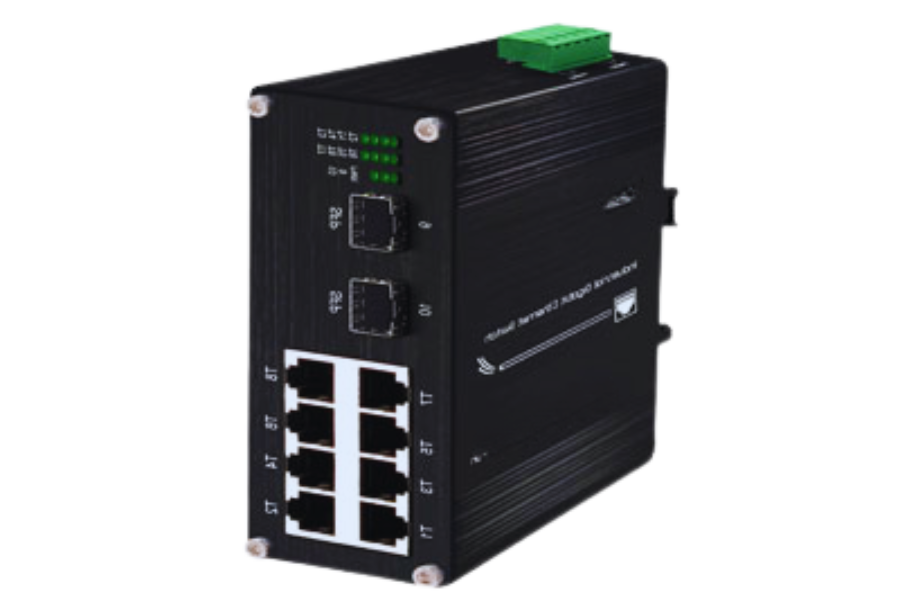
An industrial Ethernet switch is a dedicated networking device that integrates and supervises diverse pieces of equipment in an industrial setting. Unlike regular Ethernet switches, industrial switches are constructed to endure severe conditions like very high or low temperatures and exposure to dust, moisture, and vibrations. They guarantee dependable communication and seamless data transfer throughout innovation networks with industrial automation, monitoring, and control systems. Providing redundancy and real-time data capabilities as well as high bandwidth, industrial switches offer the utmost network stability and efficiency, ensuring seamless operations in challenging applications.
Understanding Industrial Switches
Industrial switches are custom-built to function in industrial settings. Significant characteristics include rugged construction to endure extreme environments with very high and low temperatures, moisture, and dust. They have redundancy features such as failover support to aid in continuous communication or information transfer and high-speed data transmission for critical time-sensitive applications. Furthermore, industrial switches have more security features to protect the network and integrity from unauthorized use, as well as scalability features to accommodate growing systems. All these features allow efficient and reliable industrial automation and control systems to function, making them central to industrial operations.
The Role of Ethernet Switches in Industrial Networks
Ethernet switches are crucial in the communication within industrial networks as they manage the flow of data packets between devices. They facilitate dependable connections between automation’s basic building blocks – controllers, sensors, and actuators. Ethernet switches enable real-time activities by giving priority to data flow and reducing delays. In addition, they offer redundancy features that bolster network resiliency and minimize downtime during failure. Because of these functions, Ethernet switches are at the core, supporting uninterrupted and effective industrial network operations, particularly with enhanced Picos® functionalities.
Advancements in Industrial Ethernet Technologies
The functions of industrial ethernet networks are now more reliable and flexible due to the Industrial ethernet enhancements. One major development is Time Sensitive Networking (TSN), which ensures that data packets are sent and received severally within a short time. TSN guarantees the seamless merging of IT and OT by offering high bandwidth communication with low jitter and latency. These features are vital to modern industrial applications such as robotics and autonomous systems.
Another innovation is the adoption of gigabit and multi-gigabit ethernet. The soaring bandwidth demand from high-definition video footage, data-intensive analytics, and industrial cloud services have made these connections necessary. For example, uninterrupted gigabit transmissions greatly enhance communication for machine vision systems, which in turn improves productivity and operational visibility.
There has also been increased integration of Power over Ethernet (PoE), allowing devices such as cameras, wireless access points, and sensors to be powered and data fed through one Ethernet cable. This helps lower infrastructure expenses and assists in system design in remote locations.
To safeguard against cyber threats, industrial Ethernet networks have been protected using segmentation, encryption, and the deployment of advanced intrusion detection systems. Protecting communication becomes critical in the context of connected factories and IIoT as it helps prevent industrial operations from falling into unauthorized hands.
Industries are now better positioned to achieve targeted network performance, flexibility, scalability, and adaptability relevant to Industry 4.0 and the years to come.
How to Choose the Right Industrial Ethernet Switch for Your Needs?
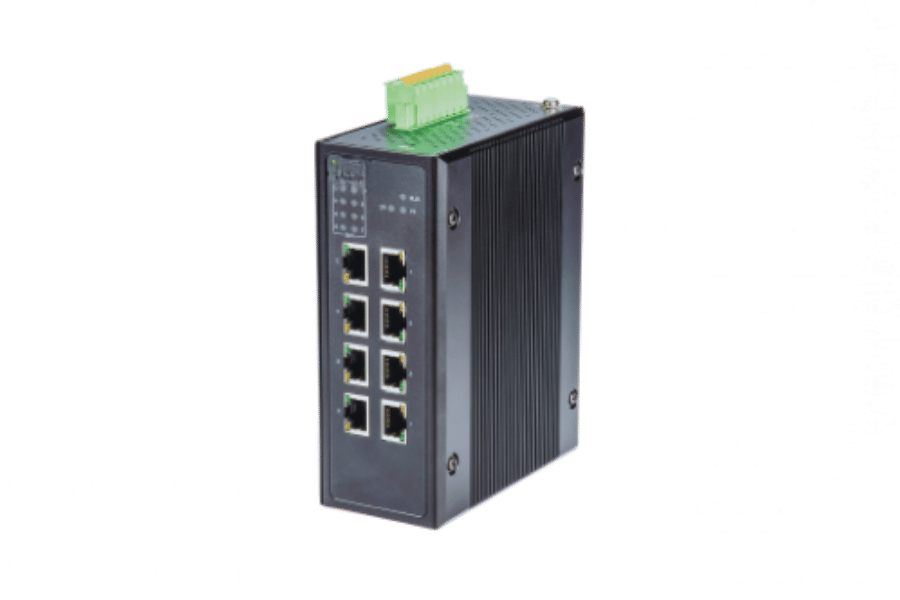
Key Factors in Selecting Ethernet Switches
When looking to purchase an industrial Ethernet switch, there are factors that should guide the purchase to make sure that the network performance and reliability needs are met:
Port configuration and speed
One of the primary considerations is port configuration. In industrial Ethernet switches, the port types include Fast Ethernet (10/100 Mbps) ports, Gigabit Ethernet (10/100/1000 Mbps) ports, and ports that have the capability for the new generation of Ethernet speeds. For instance, Gigabit Ethernet ports are necessary for applications that have high data transfer rates like video surveillance or real-time monitoring.
Redundancy mechanisms and reliability
In industries, the availability of the network is very important. Features like Rapid Spanning Tree Protocol (RSTP), ring protocols, and dual power inputs ensure that the network is protected against failures and are, therefore, suitable for industrial-grade applications. Research indicates that redundant systems reduce downtime by as much as 90%, which can lead to savings over time.
Endurance and Environmental Resilience
Usually, Ethernet switches are placed in extreme conditions. For reliable performance, it is ideal to choose switches with an operating temperature range of -40°C to 75°C, resistance to vibrations, and an IP rating. For example, environments with water or dust exposure must have IP65 or IP67 enclosures.
VLAN and QoS Support for Traffic Management
Segmentation of Virtual Local Area Network (VLAN) and prioritization of network traffic through Quality of Service (QoS) features enable control of the network traffic flow. This aids in preventing network congestion and supports the fluid operation of voice and video services.
Support for Industrial Protocols
Specific industrial protocols such as Modbus TCP, EtherNet/IP, or PROFINET are heavily relied on in various industries and need concentrated research and development in the power sectors of the industry. Make sure that the switch facilitates the more advanced integration and communication features of the devices.
Security Protocols and Features
As industrial networks face more cybersecurity risks, Access Control Lists (ACLs), MAC address filtering, and network authentication are critical. Better switches are equipped to safeguard users from Distributed Denial of service (DDoS) attacks, including port security features at the switch level.
Options For Handling The Problem
Unlike unmanaged switches, which offer little control and monitoring functionality, managed switches give much more functionality. In larger networks, SNMP, web-based interfaces, or even centralized network management software are very useful.
Considering all these aspects, networking managers can choose an Ethernet switch that is the most suitable for the business’s operational and environmental needs, achieving the best performance in industrial networking settings.
Comparing Managed and Unmanaged Switches
Differentiating between managed and unmanaged Ethernet switches requires an evaluation of what each offers or lacks regarding network control, performance, and costs. Managed switches have higher configurability, which permits network administrators to set industrial-grade networks for enhanced performance, scalability, and security. These include VLAN (Virtual Local Area Network) support for traffic segmentation, Quality of Service (QoS) to prioritize essential packet shipment, and several security protocols like Access Control Lists (ACLs), which defend the network from unauthorized access. Managed switches facilitate network troubleshooting too, for example, through port mirroring and logging.
On the other hand, unmanaged switches function as plug-and-play devices with very limited configuration capabilities. They direct traffic to other active devices without administrators having to do anything to help. They are inexpensive and easy to implement—you just plug them in. These features are ideal for small or low-priority networks where advanced management is not needed. However, they are not suitable for environments that require precise traffic management or security due to the lack of monitoring and control features.
When looking at facts, managed switches tend to have greater capacity backplane throughput, some of which can exceed 100 Gbps in enterprise models, compared to the 10-24 Gbps range of basic unmanaged switches. Furthermore, managed switches usually support a significantly greater number of MAC (Media Access Control) addresses, in some cases, tens of thousands, unlike unmanaged switches, which have much fewer addresses. With these features, managed switches are indispensable in modern networking situations that put a premium on performance and scale.
Any decision-maker must balance the operational burden of the network with the scalability and financial constraints when deciding the switch type for a particular use case. Unmanaged switches are ideal for simple connectivity appliances, whereas managed ones are more appropriate for complex, agile networks.
The Importance of Ruggedized Designs
Ruggedized constructions are critical for the dependability and functionality of devices and systems working under difficult conditions. These constructions are built to endure severe temperature changes, moisture, vibrations, and physical damage, which makes them essential in manufacturing, transportation, defense, and energy industries. An example includes the use of ruggedized switches for industrial control system applications, which are hostile due to dust, heat, and electromagnetic radiation, rendering standard hardware useless.
Data shows that some industrial spaces can get as cold as -40F and as hot as 158F, which makes it necessary for them to use devices that perform well within that range. Additionally, ruggedized equipment is known to have IP67 or MIL-STD-810 certifications, which guarantee ingress protection from solids and liquids and shock and vibration protection. This is crucial in cases where there is a lot of mechanical impact and changes to the environment, like temperature changes of 40 degrees and 75 degrees Celsius.
The inclusion of ruggedized technology further reduces downtime and maintenance expenses by minimizing hardware malfunctions. For example, industries that use ruggedized switches in mission-critical infrastructures report substantial increases in average time between failures (ATBF). Some of these devices boast ATBF rates over 200,000 hours. These operational efficiencies translate to a reduced total cost of ownership, hence, ruggedized designs become an attractive proposition for operations in extreme environments.
Therefore, the adoption of ruggedized designs is a multi-faceted proactive decision that protects the function and life of the systems while meeting the requisite operational safety and quality standards. The adoption of these designs fulfills the existing and anticipated requirements in areas that need uncompromising resilience and reliability, especially in constrained industrial applications.
What are the Advantages of Using PoE Switches in Industrial Networks?
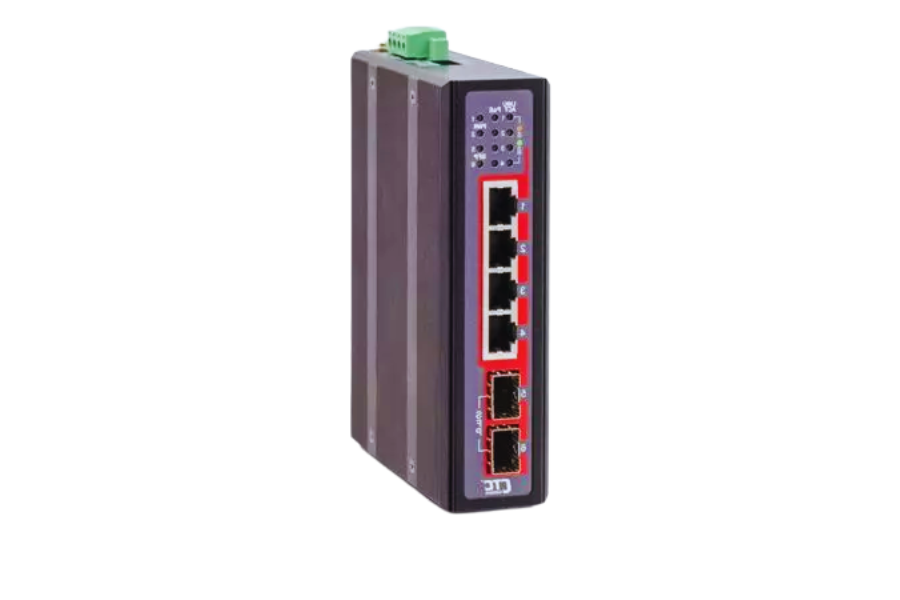
Understanding Power over Ethernet (PoE)
Power over Ethernet (PoE) refers to a technique that allows power and data to be transmitted simultaneously on a single Ethernet cable. This removes the requirement for extra power supplies for IP cameras, VoIP phone devices, and wireless access points. PoE also reduces the amount of equipment needed for network installation and maintenance, thereby improving network efficiency and lowering costs, which is especially important in industrial settings with confined and dependable installations. Moreover, it facilitates network design greater than traditional approaches by making the relocating and adding devices easier without the need for substantial infrastructural alterations.
Benefits of PoE in Industrial Applications
Streamlined Installation and Reduced Expenses
The need for a power source for connected devices is done away with because Power over Ethernet (PoE) can power devices directly over the network cable. This saves money on electrical work and additional cabling, which greatly enhances savings in industrial setups. Recent industry data shows that implementing PoE can help save up to 30% in installation costs when compared to traditional methods.
Increased Flexibility and Expansion Opportunities
The convenience of Power over Ethernet allows for devices to be installed further away from power outlets. This hardware flexibility facilitates scalable network designs, where devices can be easily upgraded, moved, or added. For example, a study done in 2022 shows that 50% more adaptation to expanding networks is provided by PoE systems compared to conventional systems.
Decentralized Power Management
Power from the central switch or hub is delivered through network cables using PoE. With all devices controlled from a central point, monitoring and control is greatly simplified, enabling issues like power loss to be easier to identify. Studies show that operational efficiency can be increased by 20% with the implementation of centralized power management systems to reduce network downtime.
Increased Consistency
With PoE infrastructure, connected devices are guaranteed to operate even during power outages due to the presence of uninterruptible power supplies (UPS). This is very crucial in industrial settings that need constant operation since downtime results in tangible loss in productivity and revenue.
Assistance for IoT and Smart Technologies enhances the development of industrial power solutions.
Instead of traditional systems, sensors in industrial settings increasingly utilize IoT and smart technologies. PoE enables the powering and networking of these devices. For instance, smart sensors and automated systems are expected to be integrated with PoE networks, leading to a 35% increase in the adoption of IoT devices in industries by 2025.
Safety and Compliance
Provisions of electrical and safety services are often carried out at low voltages, which are well below the limits of most safety standards, hence, safety precautions should be taken to further prevent electrical dangers during installation and servicing. This makes it appropriate to use in industrial areas where safety requirements are high to ensure compliance and longevity.
These benefits demonstrate the reasons why modern industrial networks are increasingly incorporating PoE, as it meets efficiency and flexibility demands in highly competitive environments.
Integrating PoE Switches with Wi-Fi Access Points
Integrating Power over Ethernet (PoE) switches with Wi-Fi access points has become a standard practice in modern networking systems for effective connectivity and power efficiency. With an innovative approach, PoE technology allows data and electrical power to be transmitted through a single Ethernet cable, thereby minimizing the availability of power sockets or electrical wiring. This feature proves particularly effective when deploying wireless access points in hard-to-reach or outdoor locations where traditional power sources may not be available.
Research indicates that the deployment of Wi-Fi 6 access points has increased 38% from 2021 to 2023, enabling greater access to faster data rates and reduced latency. Optimized performance is observed when pairing Wi-Fi 6 or Wi-Fi 6E access points with PoE switches as high throughput accompanied with increased data transfer requires a high level of power. Revolutions in POE standards like IEEE 802.3bt (90W per port) greatly support multi-radio high-performance access points, including IoT-enabled multi-radio high-performance access points and other novel features.
This integration also enables network scalability. Using PoE switches, network administrators can easily expand wireless networks since new access points can be added without extensive changes to the existing infrastructure. Moreover, remote monitoring, control, and troubleshooting of access points can be consolidated with PoE switches, which reduces operational costs and downtime.
Moreover, the advanced efficiency of energy-saving enabled networks is complemented through the use of energy-saving protocols that automatically optimize power usage without sacrificing network performance. Meeting operational goals while contributing towards sustainability efforts is becoming more important for enterprises today, and these protocols can achieve that.
The combination of Wi-Fi access points and PoE switches creates a more reliable and flexible wireless networking infrastructure that can scale to meet the needs of high-density environments such as corporate campuses, large-scale industrial sites, and hospitals. This integration highlights how PoE technology is crucial in the advancement of wireless communication.
How Does Connectivity Impact Industrial Network Infrastructure?
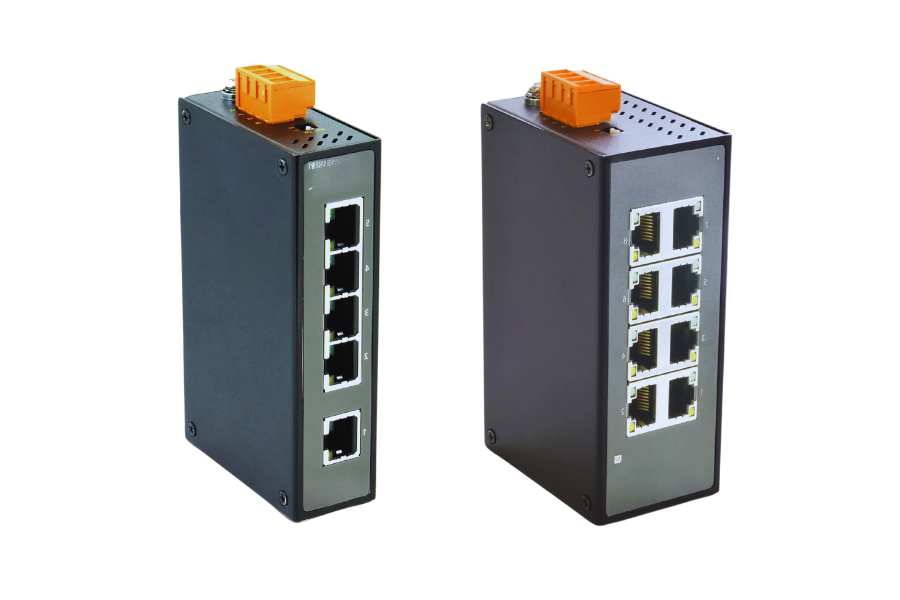
Enhancing Network Reliability with Redundancy
The reliability of the system is greatly enhanced with redundancy, as there is constant operation regardless of hardware failure or interruption. The addition of redundant pathways and devices enables me to ensure that important systems are always operational, reducing downtime and maximizing efficiency in the industrial network infrastructure. This strategy effectively protects against single points of failure.
The Role of SFP Ports in Industrial Connectivity
SFP (Small Form-factor Pluggable) Ports are vitally important for modern industrial communication since they allow for reliable and fast data transfer across vast areas. This Task is achieved through the use of specially designed SFP ports that allow the connection of interchangeable optical or copper transceivers with individual equipment modules like switches, routers, or media converters. Due to their modular forms, these connectors can be changed to fit network needs designed for different standards of data transfer, including Gigabit Ethernet and 10 Gigabit Ethernet.
The SFP ports, along with appropriate modules, allow extending the network areas even for SFP-enabled compact industrial equipment, which is one of the greatest benefits of SFP. For instance, optical SFP modules can cover distances of up to 80 kilometers by using single-mode fiber, which is useful in large industrial systems and geographically spread operations. They also help to reduce Electromagnetic Interference (EMI), which is very important for industrial environments with high-power devices.
Reports from different sectors indicate that the use of SFP ports within industrial settings is on the rise, mainly because of their Power over Ethernet (PoE) capabilities and the broadening scope of 5G IoT devices. As it stands, the global SFP transceiver market is expected to expand by about 8.5% CAGR from 2023 to 2028. This growth will be supported by the unmatched serviceability and productivity of SFP transceivers in diverse network systems.
Industrial networks are more flexible, perform better, and have greater availability with the implementation of SFP technology, which allows constant communication in even the most rigorous operations. SFP ports, therefore, play an important role in enabling the development of robust and adaptable industrial network infrastructures.
Ensuring Optimal Bandwidth for High-Performance Operations
The development and adoption of high-performance practices should consider the need for proactive network traffic management. This is particularly important to maximize the efficiency and productivity of such operations. In modern industries, the effective use of bandwidth entails the prioritization of mission-critical data streams, reduction in latency, and an uninterrupted flow of information. With a global proliferation of data-centric economic activities, the forecasted consumption of international internet bandwidth in 2023 is more than 786 terabytes per second, which demonstrates the increased spending being made on network services.
The deployment of modern multi-purpose network management tools is one solution. For example, implementing a Quality of Service protocol allows the allocation of sufficient bandwidth for mission-critical applications so that the ability to function over heavy data loads is ensured. Also, the installation of multi-gigabit SFP ports and transceivers, which can support 10 Gbps and higher, facilitates the execution of heavy tasks at the same time, such as video conferencing, streaming of 4K videos, or performing real-time data analysis.
It is also important to properly scale; for example, using 5G and Wi-Fi 6E technologies should be included in the forecasted improvement of the network infrastructure because they have lower latency and faster data transfer rates. These technologies provide an excellent opportunity for firms to cope with an increase in the number of devices connected to the network while sustaining productivity levels even when network demands rise. Hence, the implementation of these types of solutions will allow organizations to be more effective operationally and use the available bandwidth most efficiently in a modern data-heavy environment.
What are the Best Practices for Industrial Switch Deployment?

Implementing Spanning Tree Protocol for Network Stability
The Ethernet-based infrastructures can often face disruption issues due to network loops. Maintenance of stability in the network, while ensuring disruption is avoided, can be accomplished due to Spanning Tree Protocol (STP). Network loops are created when multiple switches are connected and can result in vast negative impacts, including broadcast storms, duplication of packets, or invalid entries into the MAC address table. These loops can be mitigated effectively by STP, which leads to ensuring the network design is fault tolerant along with being reliable.
STP works towards disabling redundant paths from the network while keeping a primary route active for traffic data. In case of any changes in topology, an STP network easily adapts by switching inactive backup paths to active when a link fails, ensuring minimal time is wasted. RSTP and MSTP are considered modern, flexible options of STP with added convergence extensibility and fast speed within complex industrial settings.
The impact of using STP is evident with databases suggesting decreased unplanned downtimes. Through critical hardware and monitoring tools combined with STP, organizations can achieve an astonishing number of99399.999 % of availability because downtime is minimal. Additionally, the time necessary for convergence with tools such as RSTP can be reduced to milliseconds, which is essential for real-time control systems and automation in industrial settings.
Effective STP deployment requires the optimal configuration of bridge priorities, port costs, and root bridge positions in the network topology. Moreover, the use of high-grade industrial switches that implement Link Aggregation Protocol (LACP) and loop detection, as well as STP, is guaranteed to improve performance and reliability in highly demanding settings.
Considerations for a Wide Range of Industrial Environments
Understanding the scope of the network, its traffic behavior, and devices’ compatibility is crucial when deploying spanning tree protocol (STP) in an organization. Switches must be equipped with advanced STP like Rapid Spanning Tree Protocol (RSTP) to speed up recovery time in larger operations. The existence of redundancy is essential, which is why implementing redundant links and failover testing is paramount in minimizing disruption. Furthermore, considering harsh environmental conditions like extreme temperature or electromagnetic interference, specialized industrial-grade hardware must be employed. Regular monitoring and other network maintenance activities aid in detecting inefficiencies at minimal risk and ensures perpetual dependability.
Future-Proofing Your Industrial Switch Infrastructure
Developing forward-looking policies towards technologies and services such as industrial switch technology requires flexible, cutting-edge approaches which can keep up with industry Shifting towards automation and software defined networking (SDN) is a strategic decision, as it allows for more centralized control, and greater SDN Software Defined Networking services is expected to follow a compound annual growth rate (CAGR) of 19.2 percent from 2023 to 2030 reflecting its adoption in various domains. ranges.
Moreover, the switch to Industrial Ethernet switch technology increases bandwidth to 10G and above. The use of these technologies allows for the greater speed of data transmission, which is critical for real-time monitoring, IoT, and machine-to-machine communication. Accomplishing this under the Time Sensitive Networking (TSN) guarantees high levels of deterministic data delivery, which is necessary on industrial automated workflows.
Protecting infrastructures against cyber exploitation is the other major issue to be considered. The integration of advanced encryption-based hardware, secure boot, and network segregation capabilities offer increased attack resilience to critical systems, which makes them robust to breaches in operational environments. Within the past year, industrial control systems (ICS) in operational technology (OT) environments have reported a 38% rise in cyber attack attempts, indicating the need for more sophisticated systems to defend against intruders.
Going forward, focusing on sustainable switch solutions promises to provide savings in the long run, especially in addressing sustainability targets. Developments in the Power over Ethernet (PoE) standard and energy-efficient design perimeter features enable less energy use to be achieved with no impact on the quality of the service provided by the network. Finally, bearing in mind modern standards, such as IPv6 and next generation QoS (Quality of Service) measures, is important for the smooth functioning of the system.
With these technologies and strategies, organizations can adjust their networking infrastructure to cope with future requirements while at the same time guaranteeing better efficiency, reliability, and scalability in the long term.
Frequently Asked Questions (FAQs)
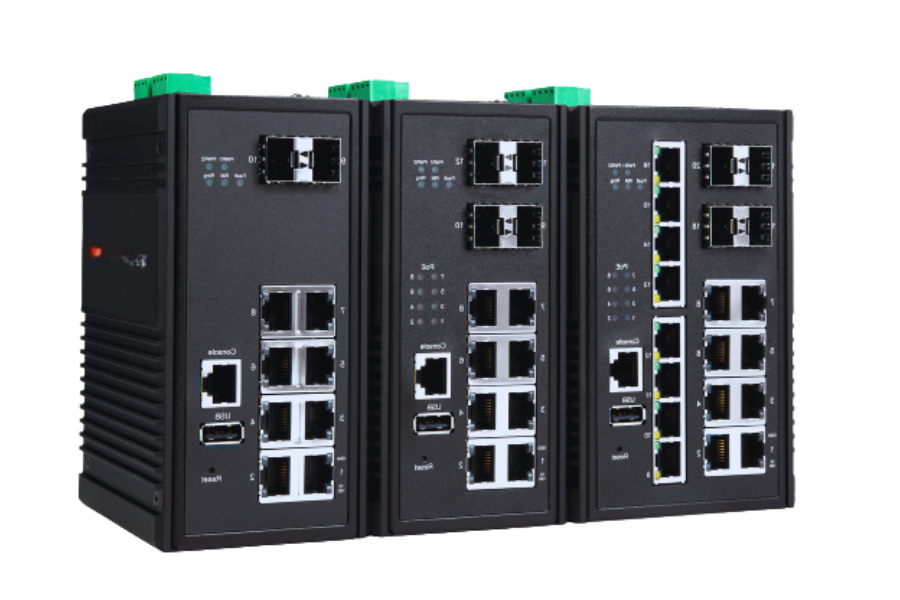
Q: Define industrial gigabit Ethernet switches and elaborate on how they are different from enterprise switches.
A: Industrial gigabit Ethernet switches are highly robust networking devices that are meant to be used in extremely challenging industrial conditions. In contrast to enterprise switches, these devices have a much wider operational temperature range, typically -40° to 75°C, are more reliable, and have features meant for industrial automation and monitoring. Such devices are best suited for factory floors, data centers, and other industrial facilities with stringent environmental conditions.
Q: What are the key features to consider when selecting an 8-port industrial Ethernet switch?
A: In choosing an 8-port industrial Ethernet switch, the following features must be prioritized: gigabit speeds (1G), extreme operating temperature tolerance, support for multiple industrial standard protocols, dual power supply support, increased EMI/EMS shielding, the ability to be mounted on a DIN rail, and sophisticated management features like SNMP. Other features that can improve performance and protection in industrial settings include QoS, VLAN support, and cybersecurity features.
Q: Which characteristics of managed industrial Ethernet switches facilitate network efficiency and reliability?
A: Managed industrial Ethernet switches improve the performance and dependability of networks because they offer advanced features. They encompass VLANs for traffic segregation, QoS for critical data overriding, redundancy protocols for failover protection, and SNMP management for remote monitoring and troubleshooting. They also allow for efficient control of network topology, workflow, and bandwidth utilization within industrial applications like monitoring and control automation networks.
Q: How essential are industrial Ethernet switches for industrial automation?
A: Industrial Ethernet switches are essential to the industrial automation domain for the reliable and scalable connectivity of diverse devices and systems. They allow PLCs, sensors, HMIs, and other automation-related devices to communicate with each other. These switches also enable real-time data transfer, guarantee a certain level of performance, and support specialties of industrial automation right within the ease of performing the processes while operating, making production efficient and flexible.
Q: What are the advantages of compact PoE industrial Ethernet switches in industrial applications?
A: Compact PoE (Power over Ethernet) industrial Ethernet switches are beneficial for industrial applications. The ability to transmit both power and data through a single Ethernet cable simplifies wiring and lowers installation costs. In compact industrial environments, these switches are perfect for powering IP cameras, wireless access points, and other compatible PoE devices. Their compact size and rugged design make them suitable for deployment in various industrial settings.
Q: In what ways do Software Defined Networking (SDN) features benefit industrial Ethernet switches?
A: Industrial Ethernet switches that have SDN features provide several benefits, such as streamlined network management, increased network adaptability, and better network protection. SDN allows for greater automation of network resource allocation, which makes it easier to set up networks and use the available bandwidth. Such features further enable the industrial network infrastructure to be more agile and responsive, which is ideal for growing IoT and Industry 4.0 projects.
Q: What role do Layer 2 industrial Ethernet switches have in network segmentation and security?
A: Layer 2 industrial Ethernet switches enhance network segmentation and security because they support VLANs (Virtual Local Area Networks). This enables a network to segregate traffic to and from different operational areas or departments, which improves performance and increases security. In addition, these switches include other network security features like port security, access control lists, and storm control, which protects the network infrastructure from potential cyber attacks.
Q: What are some considerations when choosing industrial Ethernet switches for outdoor applications?
A: In outdoor applications, care must be taken with the construction of industrial Ethernet switches regarding their temperature extremes (for instance, -40° to 75°C), enclosure ratings for IP dust and water protection, surge support, UV and corrosion shielding, among others. Consider fiber uplinks for long-range connections and high-level management features offered through web and SNMP access. The switches must be designed to meet the environmental limitations and unique circumstances of the outdoor installation.
Reference Sources
1. Title: A Generalized Power-Based Modelica Library with Application to an Industrial Hydraulic Plant
- Authors: Ilja Alkov et al.
- Published Date: 3/10/14
- Citation Token: (Alkov et al., 2014, pp. 617–626)
Synopsis:
- In this paper, a bond graph approach to modeling based on an energetic formulation is implemented in Modelica with the development of the library BondGraph. BondGraph lets users design a model graphically through the bond graph formalism. The library includes basic bond graph elements, certain nonlinear components associated with hydraulic phenomena, and particular nonlinear elements resulting from the hydraulic effects. A case study demonstrating the use of BondGraph in an industrial plant is presented to illustrate the functionalities of the developed library.
2. Title: The Conversion of the Industrial Switch SNMP Protocol for OPC Interfacing
- Authors: Liu Qiang et al.
- Published On: June 21, 2007
- Citation Key: Liu Qiang et al.. (2007)
Abstract of Paper:
- This paper reviews the procedure for interchanging between the SNMP protocol and OPC data exchange protocol in an industrial context. It specifies the packet syntax for the data transformation process, as well as describes the implementation of an SNMP-based network management system server. The procedure has the objective of enhancing the management of industrial operations.
3. Title: Photovoltaic Systems With Two-Stage Buck/Buck-Boost Converters Featuring Redundant Synchro Switching for Open-Switch Fault Tolerance
- Authors: S. Siouane et al.
- Publication Date: May 1, 2019
- Citation Token: (Siouane et al., 2019, pp. 3938-3947)
Summary:
- In this work, we present a method of fault tolerant operation for a two-stage buck/buck-boost converter experiencing an open-circuit switch fault. This technique utilizes redundancy through the use of an equivalent synchronous switch for both primary switches of the converter. The proposed approach has been shown to enable post-fault operation at full power level and has been verified through experiments.
